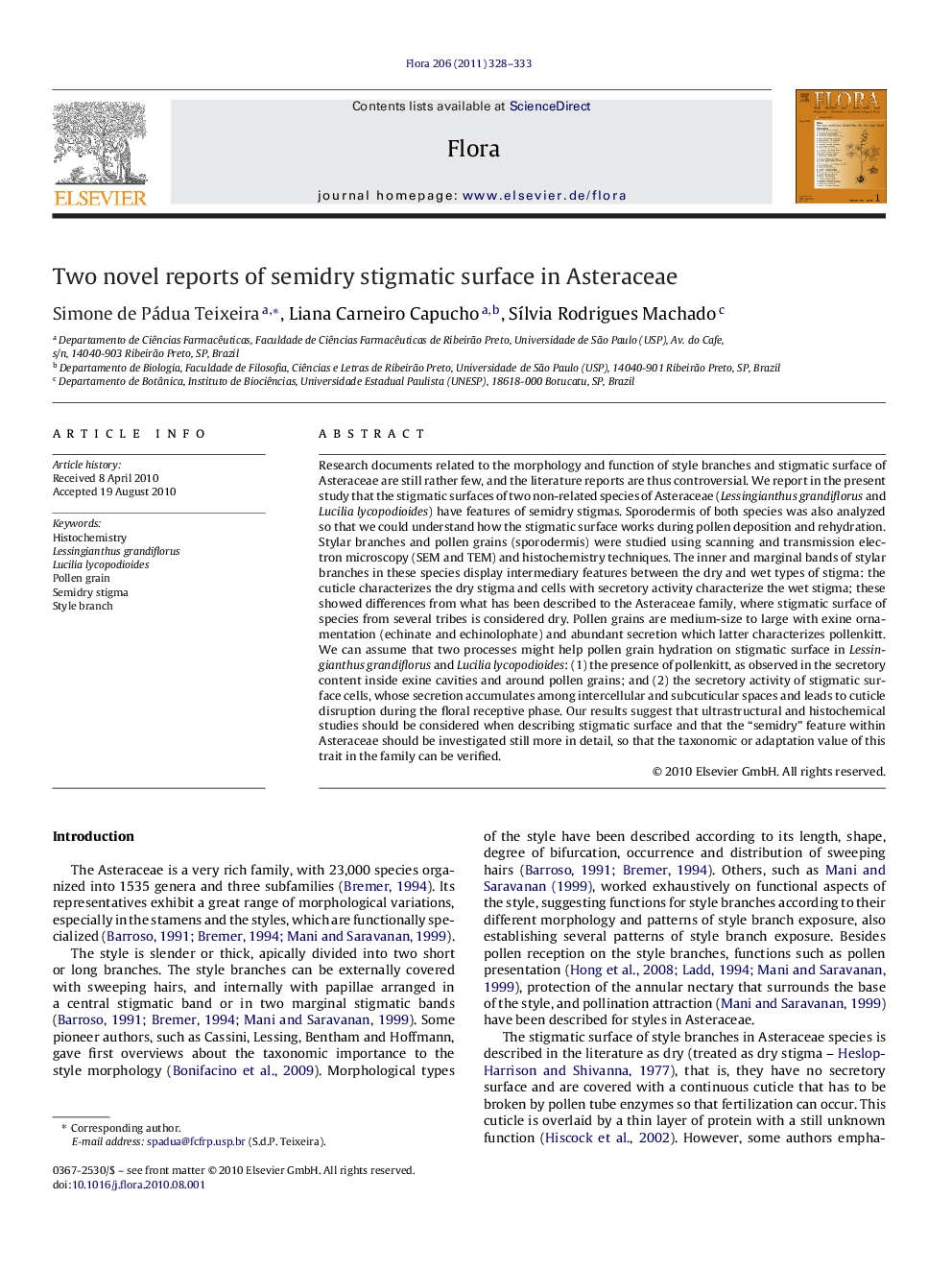| کد مقاله | کد نشریه | سال انتشار | مقاله انگلیسی | نسخه تمام متن |
|---|---|---|---|---|
| 2180068 | 1095106 | 2011 | 6 صفحه PDF | دانلود رایگان |

Research documents related to the morphology and function of style branches and stigmatic surface of Asteraceae are still rather few, and the literature reports are thus controversial. We report in the present study that the stigmatic surfaces of two non-related species of Asteraceae (Lessingianthus grandiflorus and Lucilia lycopodioides) have features of semidry stigmas. Sporodermis of both species was also analyzed so that we could understand how the stigmatic surface works during pollen deposition and rehydration. Stylar branches and pollen grains (sporodermis) were studied using scanning and transmission electron microscopy (SEM and TEM) and histochemistry techniques. The inner and marginal bands of stylar branches in these species display intermediary features between the dry and wet types of stigma: the cuticle characterizes the dry stigma and cells with secretory activity characterize the wet stigma; these showed differences from what has been described to the Asteraceae family, where stigmatic surface of species from several tribes is considered dry. Pollen grains are medium-size to large with exine ornamentation (echinate and echinolophate) and abundant secretion which latter characterizes pollenkitt. We can assume that two processes might help pollen grain hydration on stigmatic surface in Lessingianthus grandiflorus and Lucilia lycopodioides: (1) the presence of pollenkitt, as observed in the secretory content inside exine cavities and around pollen grains; and (2) the secretory activity of stigmatic surface cells, whose secretion accumulates among intercellular and subcuticular spaces and leads to cuticle disruption during the floral receptive phase. Our results suggest that ultrastructural and histochemical studies should be considered when describing stigmatic surface and that the “semidry” feature within Asteraceae should be investigated still more in detail, so that the taxonomic or adaptation value of this trait in the family can be verified.
Journal: Flora - Morphology, Distribution, Functional Ecology of Plants - Volume 206, Issue 4, April 2011, Pages 328–333